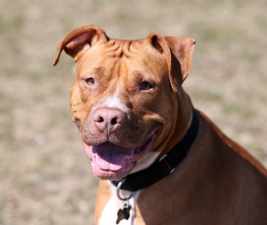You’re never going to know why your dog does what they do. That’s really hard for lots of new dog owners to understand. Probably because dogs are so in tune with us in so many ways, the parts that aren’t aligned seem incomprehensible.
It’s especially hard to know what’s going on with your dog when they do weird things. We’ve had Boston Terrier Simon for almost five years now – Fran got him when he was a little puppy. And since Day 1, he licks vertical surfaces. Cabinets, walls, furniture. Until we tell him to “knock it off,” he licks.
We know some “whys”
We know that licking and chewing are forms of self-soothing. As dog trainers, we recognize behaviors when we see them. If your dog barks at you, they want attention. If they yawn or scratch at someplace like the vet’s office, we recognize it as a stress behavior. So we know Simon finds some kind of comfort in licking things. But it’s still weird. And we’re not crazy about washing walls.
Dogs can’t ever tell us “why.” Why is a dog afraid of people wearing hats? Were they terrorized by someone wearing a hat? Probably not. The odd shape of the person’s head wearing a hat may signal something’s wrong to your dog.
You can never be absolutely sure of how your dog will react with something different. Twice in the last couple of weeks dog owners predicted one reaction and got something entirely different.
In Hope’s “Manners” class, the facility had left a little ramp that the day-care dogs play on. It’s large, plastic, brightly-colored, has three steps that go up about 15 inches on one side, a flat center, and a “slide” on the other side. The whole thing is about ten feet long. One of the dogs in class is Happy the pit bull. Her people looked at it and thought she’d charge right over it and have a blast.
They were wrong. Happy was nervous and didn’t want anything to do with it. Despite the fact that she loves class, is normally a happy and inquisitive dog, and the ramp had to have delightful doggy odors all over it. As it turned out, instead of a rambunctious play session, we had the opportunity to teach the people how to introduce new, scary things to their dogs.
Same thing, different day
In our Club’s class this week, the puppy/beginner class had a few extra minutes at the end for playtime. The facility had a large, blue, outside ball with a handle in the room. Hope asked the people how they thought their dogs would react. The people with Alfie, a five-month-old giant-breed mix, said he’d love it and want to play. So we dropped it on the floor and found out they were wrong. Alfie was terrified of it – barking and backing up. By the end of class, he still wasn’t crazy about it, but no longer frightened.
What should you do if you get an unexpected or strange reaction from your dog? The absolute worst thing you can do is drag your dog over, as if to say “See? You’re being stupid.” For whatever reason, and you’ll never know what it is, your dog is cautious about something. How do you train your dog to check out new stuff?
Distance is your friend. Get far enough away from the thing so your dog is comfortable – no side-eye staring, no hunching, but relaxed, and happy. Gradually approach while talking to your dog and giving them treats for being calm and good. At the point your dog starts showing fear, stop and just wait. If they relax, get a little closer.
Working through it
Both Happy and Alfie were better by the end of class, but neither made “friends” with the scary object. That takes some time and familiarity. You never want to force your dog into something they find frightening. You want to take away the scare, not add to it.
Why are we talking about this now? It gives you time to think about and prepare. Because we’re getting close to the time of year when scary things crop up in yards all over the place. You may think the inflatable, 9-foot-tall, fire-breathing, purple dragon is a great Halloween decoration. Your dog may think it’s as terrifying as a real one swooping down to snatch him.
So bring extra treats on your walks with your dog. Stay calm, talk soothingly, and give your dog time to adjust. Reward them for being calm. If you can gradually approach the scary thing, give it a try. The more chances your dog has to see, smell, and lick new things, the more confident they’ll become.
Enjoyed this post? Click here to sign up for the weekly newsletter and never miss another!















